Crazy 23andMe Results That Make You Rethink Your Family Tree
Some call it “recreational genetics.” But 23andMe — and the handful of other similar at-home DNA testing kits — isn’t just a way to pass the time. You discover things that are mundane, like whether the fact you hate cilantro is genetic, or of more dire importance, your future risk for breast cancer, Parkinson’s and late-onset Alzheimer’s.
But you may also find that you aren’t who you think you are, that you’re not from where you think you’re from and that some of the earliest words you learned — “mother,” “father,” “sister,” “white,” “black,” “Korean,” “Mexican” — don’t mean what you think they did. In fact, for some people, it can feel like 23andMe has turned your whole life into an episode of “Jerry Springer.”
Here are just a handful of those stories.
It’s All Relative
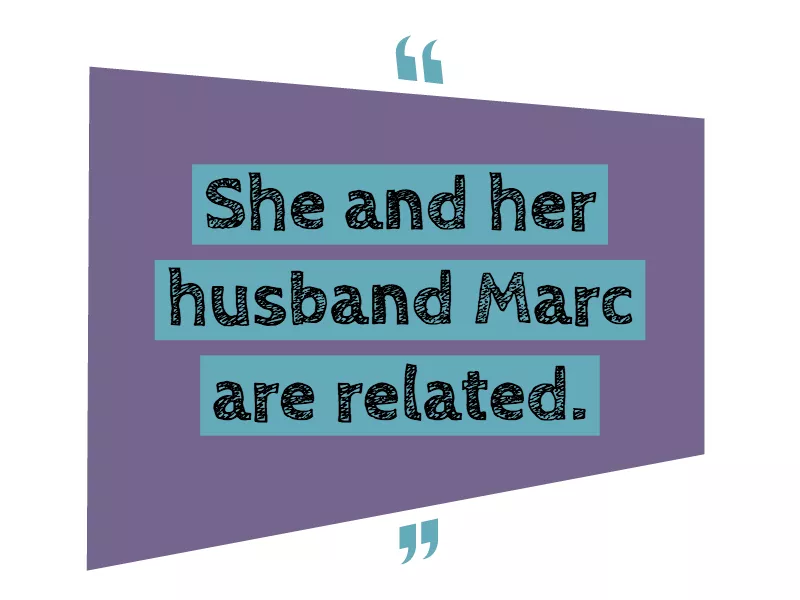
After 38 years of marriage, Liane Kupferberg Carter, a prolific writer and autism advocate, took a 23andMe test at the behest of her eldest son.
The results? She and her husband Marc are related. (You can relax: They’re related as third cousins, with no real risk of intermarriage, but what a shock!)
A Mother’s Day Like No Other
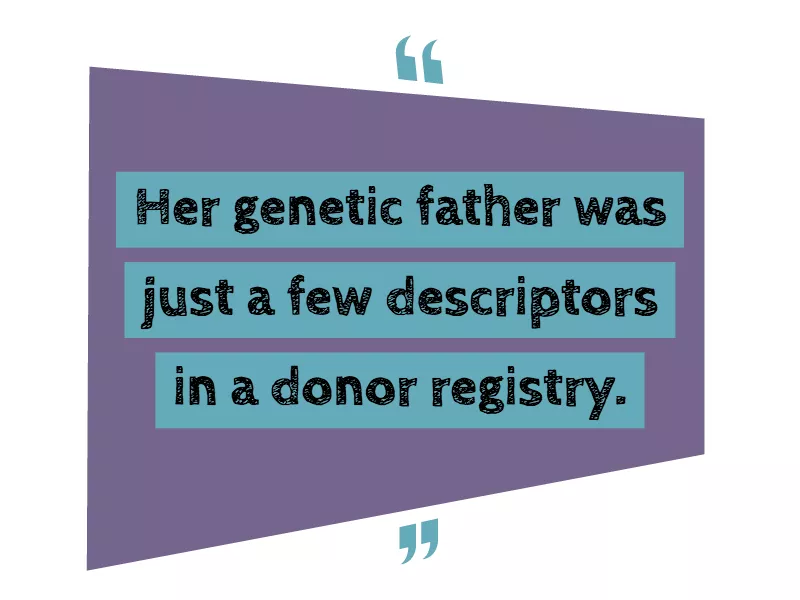
Jaclyn Baxter, a mother of two who lives outside of Sacramento, Calif., received her 23andMe results on Mother’s Day 2017 — and discovered a half-brother. She wasn’t looking for lost siblings either. Estranged from her birth mother and after her father had passed away, Baxter simply wanted more information about her health history.
Her new-found sibling, Loren Chase, lived 120 miles away in Berkeley. He not only revealed to Baxter that he was donor-conceived — as was she, Baxter learned — but that he had already discovered another half-brother, Tim McNulty — all of which was confirmed by subsequent DNA tests. (The three later discovered yet another half-sibling, a sister, through MyHeritage.com.)
Perhaps the most difficult part about learning of her new siblings was the fact that the only father she knew — and Baxter was, admittedly, a “daddy’s girl” — was of no biological relation. And that her genetic father was nothing more than a few descriptors in a donor registry: UC Berkeley grad student, tall, blonde and blue-eyed.
Cuban — at Heart
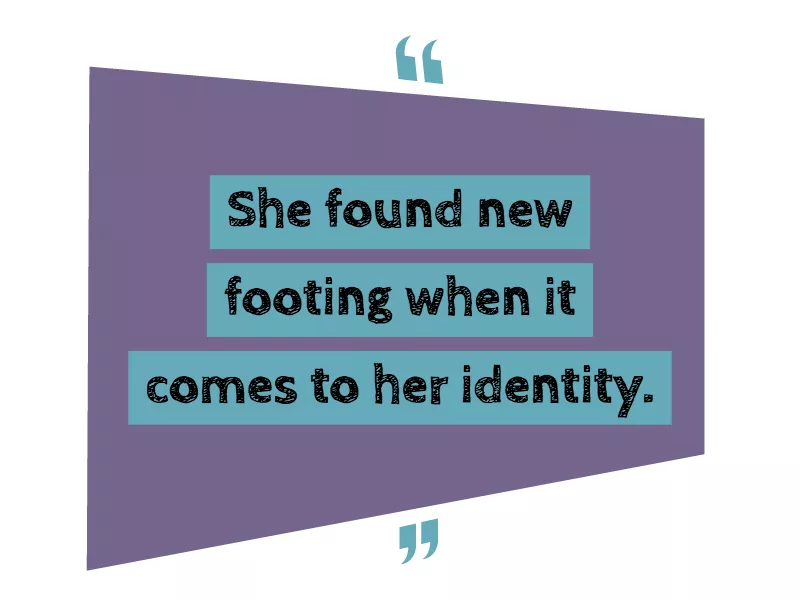
“Technically, I knew I was only half-Cuban, but because my mom was adopted and doesn’t know her background, I accepted it as my whole identity,” wrote Kelsey Castañon in Refinery29. “Then, all of a sudden, it wasn’t.”
Castañon discovered, when her sister took a 23andMe test, that she had no biological connection to her beloved Cuban father — and was only biologically connected to one of her two siblings. (She and her siblings were conceived with two different batches of donor sperm, after her parents suffered through a long battle with infertility.) But, like many people whose lives are turned upside-down by DNA test results, she found new footing when it comes to her identity. “I can still see my dad and abuela when I look in the mirror, even if biology tells me I shouldn’t,” she wrote.
Not So Anonymous
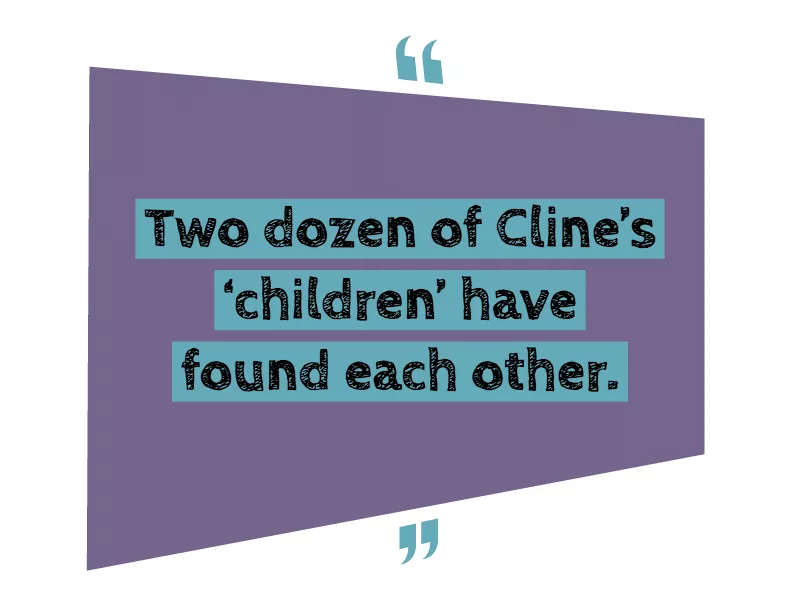
23andMe played a central role in the case against Dr. Donald Cline — an Indianapolis-area fertility doctor who, in the 1970s and ’80s, impregnated women at his clinic with his own sperm — not donor sperm or, in some cases, with what was supposed to be the woman’s own husband’s sperm.
Since suspicions first arose, in around 2014, two dozen of Cline’s “children” have found each other and have bonded via a private Facebook page.
Dating in the 23andMe Era
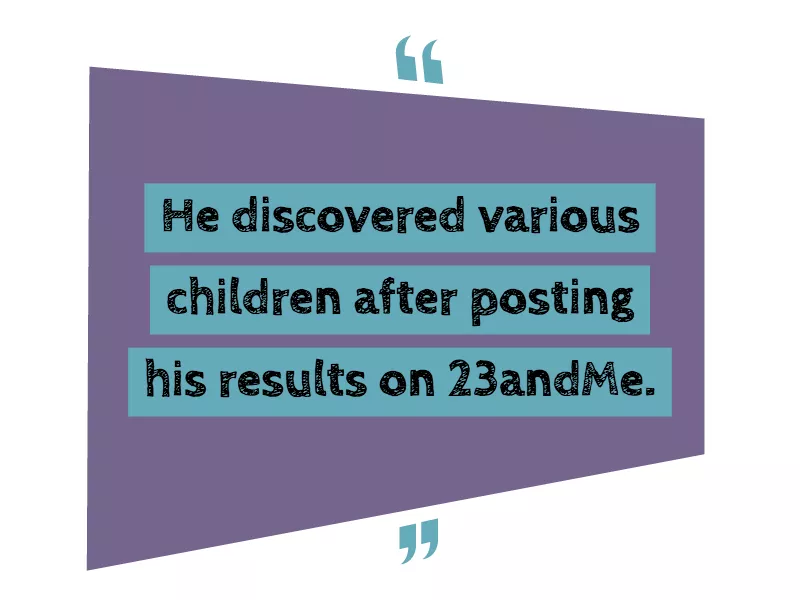
“I didn’t meet my girlfriend, Jessica, until 12 years after our daughter, Alice, was born,” writes Aaron Long in “The New York Times.” Come again?
Long, who sold sperm for money in the ’90s, discovered various children after posting his results on 23andMe, including an 11-year-old “daughter” who introduced Long to her mom — the woman he’d soon be dating.
High-Stakes Sleuthing
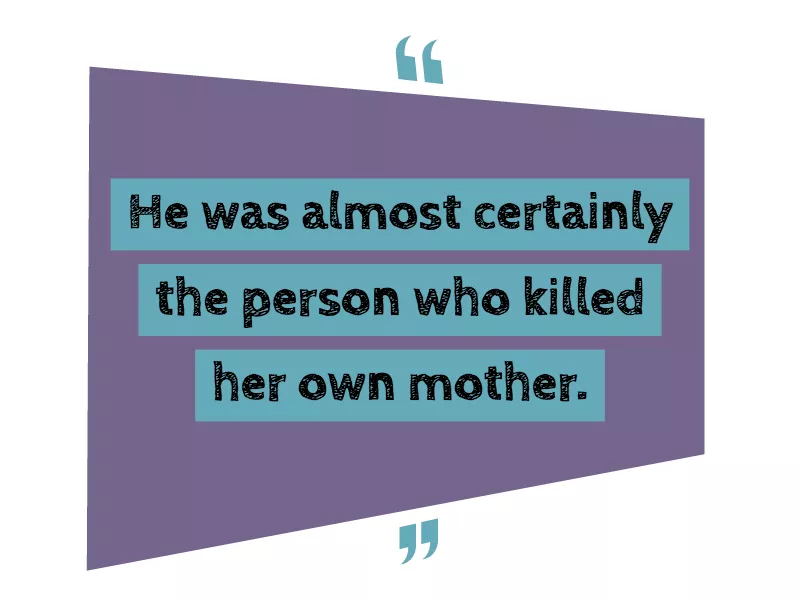
Before DNA results helped capture the Golden State Killer, 23andMe helped Lisa Jensen, a girl who was abandoned at the age of five, unravel her astonishing life story.
Not only was Jensen abducted by a serial killer who posed as her father, he was almost certainly the person who killed her own mother.
Back From the Dead
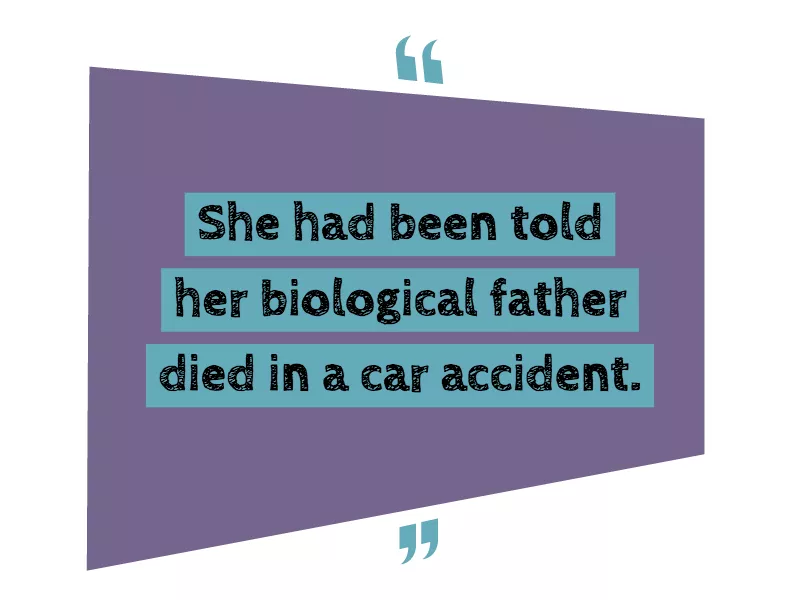
Jenelle Rodriguez never knew her biological father — and had always been told that he died in a car accident. Then, she connected with a woman via 23andMe who proved to be her father’s niece, and the family story unfolded from there.
Now, Rodriguez, who had been given up for adoption shortly after she was born, and Frank Granados, the biological father who only saw her once before her mother whisked her away, text daily at 6:30 a.m.
Switched at Birth
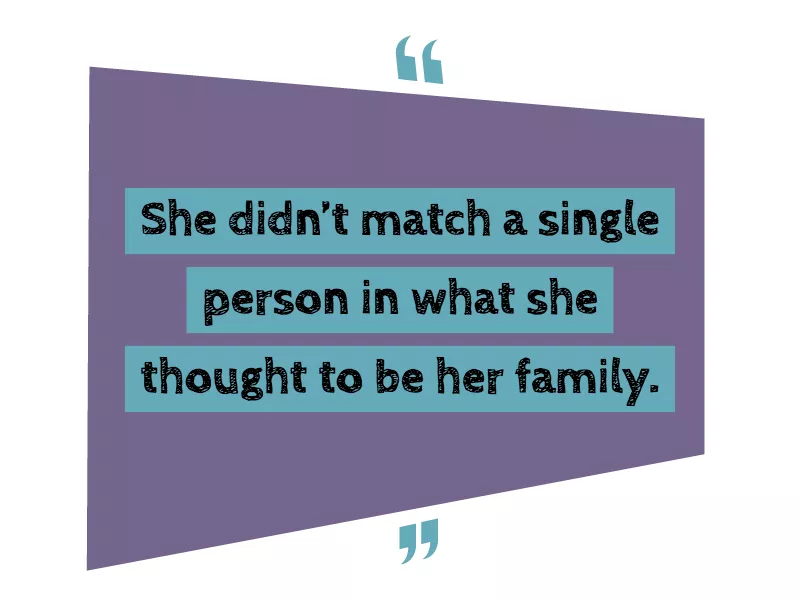
When Denice Juneski received the results of her 23andMe test, at age 72, she was shocked to find she didn’t match a single person in what she thought to be her family. Forty miles away, a relative of a woman named Linda Jourdeans, who did match Juneski’s profile, had a hunch that proved correct.
On Dec. 19, 1945, at Bethesda Hospital in St. Paul, Minn., the two baby girls, who had been born only 31 minutes apart, where somehow switched at birth.
Sister Act
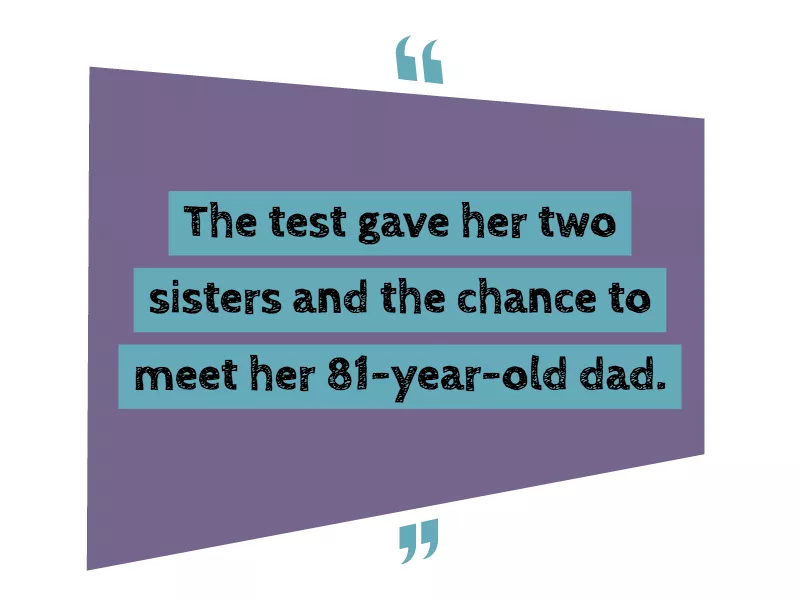
“The test should be called, ‘Brace yourself,’” Sally Griffith told “The Los Angeles Times.” Griffith, 55, suspected that the man who raised her wasn’t her biological father because of a comment from her cousin when she was a teenager, but she waited until after his death to turn to 23andMe.
The DNA test not only confirmed her suspicions, but gave her two new sisters and the chance to meet her 81-year-old dad.
Beware of Scientists Bearing Gifts
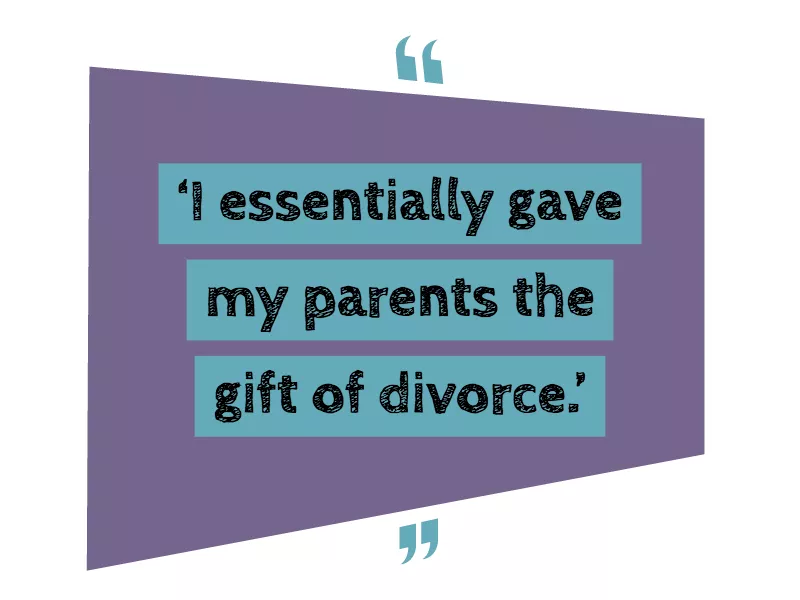
George, a reproductive biologist who did 23andMe as part of a class he taught on the genome (and who asked to not use his last name to protect his family’s privacy), got both of his parents tests as gifts. And in doing so, he discovered a half-brother.
The brother was his father’s son who was conceived and given up for adoption before his father and mother married — but it ripped his family apart. “I essentially gave my parents the gift of divorce,” he told Vox.
Race Relations

Sigrid Johnson, of Philadelphia, had grown up going to school with other black children. She went to a historically black university. When she married, her parents derided her for choosing a black man with a dark complexion.
Then, at 62 years old, long after her parents had passed, she learned something new about herself: She was 45 percent Hispanic, 32 percent Middle Eastern, 14 percent European and less than 3 percent African. “How could I not be black?” she said to “The New York Times.” “I’d lived black. I was black.”
Then, because the data coming out of genetic testing sites is only as good as the data going in, Johnson’s numbers — and thus her sense of identity — changed. She took other tests, including AncestryDNA and 23andMe, with different results. “In a matter of weeks, Johnson’s African roots had bounced from 27 percent to 45 percent African — and her Italian roots had been reported as 0 percent, 49 percent and 20 percent,” according to “The New York Times.”
More Data Issues
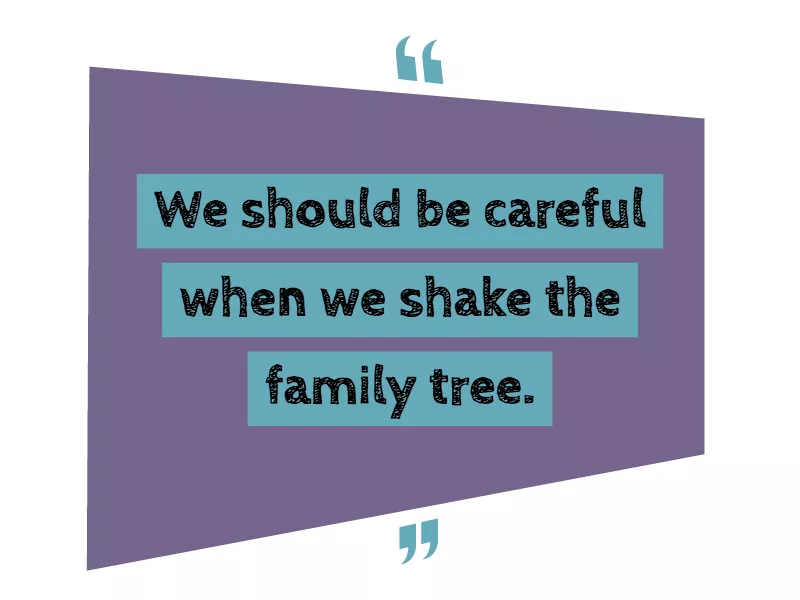
Johnson’s story is not uncommon either. A story from 2016, from a woman who identifies as Korean, cited one of the more troubling facts with this kind of genetic testing: the data. For her report, the data set included just 76 people.
And while those numbers increase as more data is scooped up by 23andMe, Ancestry.com and similar sites, the havoc they can wreak is still substantial. Which is all to say that we should be careful when we shake the family tree. What falls out might not just be shocking, but it’s also not necessarily as accurate as you’d think.